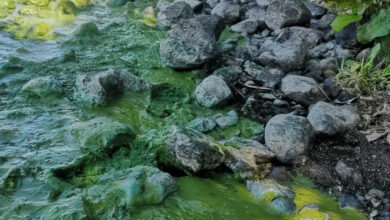Fracking explored
 Stephen Dineen explains fracking and the increasing controversy surrounding it.
Stephen Dineen explains fracking and the increasing controversy surrounding it.
Gas production companies need to be transparent, according to incoming American Gas Association President Ronald W Jibson. The Questar Corporation CEO told agendaNi that producers need to be willing to show what their frack method is: “They all have their own recipe and they need to be open about what’s in that frack load and then maybe change that.” Gibson believes that “if there are harmful products there, they [the producers] may need to change that,” and that producers need to work with environmentalists to resolve the debate.
Environmentalists remain unconvinced. For Friends of the Earth’s activism co-ordinator, Niall Bakewell, “getting it wrong just once, for such a porous and connected waterway that you have throughout Ireland, is just too big a risk to take.”
Fracking (hydraulic fracturing) is a method of extracting fossil fuels from rock. In extracting shale gas, it is conducted from a wellbore drilled into reservoir rock formations by forcing up to 10 million gallons of fluid between 5,000-10,000 feet below ground.
Australian company Tamboran was granted a five year licence from 1 April 2011 from DETI to explore and potentially drill for gas in Fermanagh. While Arlene Foster and the DUP support the method, there is opposition to it from Green, Alliance, Sinn Féin and SDLP MLAs. The UUP wants to see a detailed environmental impact assessment before any fracking happens. The TUV says they tend to be against it but would like to see more investigation of the practice.
Fracking for gas occurs by cracking open the rock formation and channelling the gas into an onshore well. It is said to be necessary to let the fossil fuel flow from the rock into the wellbore at an economic rate. The fluid injected into the rock usually consists of water, sand (to hold fractures open after treatment) and chemical additives. Gels, foams and compressed gases can also be injected.
It is supported because of its ability to reduce market costs and its contribution to a worldwide flow of gas, particularly in the US domestic market where gas market prices have almost halved in two years. The US and Canada are estimated to now have gas security for approximately 100 years.
Fracking has been the subject of increasing scrutiny and environmental debate. Frack fluid is claimed by some to contaminate groundwater (for example in Wyoming in 2006 where shallow groundwater was found to be contaminated) and the gases and chemicals are said to have the potential to migrate to the surface. There are also worries from residents about the potential mishandling of waste.
The practice has been banned in France and suspended in New South Wales in Australia, and New York and New Jersey. In 2004 a study by the US Environmental Protection Agency found that injection of fracking fluids into coal bed methane wells posed minimal threats to underground drinking water. The study, however, did not focus on other aspects such as disposal of fluids and other environmental concerns. It also occurred before the number of contamination claims started to grow.
A 2011 study by Duke University, North Carolina, found that groundwater tended to contain much higher concentrations of methane near fracking wells, with a potential explosion hazard. It found that the methane’s isotopic signatures and other geothermal indicators were consistent with it originating in the fracked deep shale formations rather than any other source.
Fracking in Lancashire was suspended after two small earthquakes in April and May this year, which occurred after drilling operations. An independent study directed by Dr Hans de Pater (Delft University of Technology, Netherlands), concluded that it was ‘highly probable’ that the quakes were triggered by the fracking.





